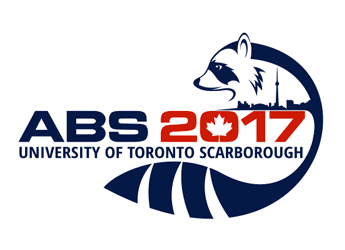8 Rules for Designing Conference Logos
Conference logos are a lot important for the success of your conference than anything else. Think about it and you will find that your conference logo is going to appear almost everywhere you think is possible - from websites to pop-up ads to T-shirts and whatnot. To top it off, if you are a newbie to the world of conference logo designs, you cannot fathom the amount of thought put in when designing these logos to make them "good," let alone the best. The internet might give you plenty of answers to your questions, but it will not tell you those certain rules that are imperative to follow when designing conference logos. For this purpose, read on. Many conference holders are carried away with the feasibility of price; however, they are not fully aware of how a bad conference logo can reflect an equally bad impression of the business associated with it. You cannot negotiate good skills and professional logo designing with the cheapest price. The kind of effort a mesmerizing logo demands is justified with the cost that comes with it.
The 8 Rules of Conference Logo Designs:
It is very well understood that an ideal logo is flexible and uncomplicated. Prior to designing a conference logo for your company's conference, it is important to first keep these rules for designing firmly in mind.
1. To begin with, the first rule in the book of conference logo designing is to avoid using too many illustrations or images that clutter the logo. In simpler words, "a conference logo must never hurt the eyes" and although this rule is applicable to every logo designed out there, it is absolutely mandatory for conference logos. The reason being, a conference itself is quite a formal gathering which delegates attend by extracting time out of their busy schedules. Therefore, to design a logo that is too crowded is going to lose the charm out of your conference before the said people even attend it. A seminar, for example, is a type of a conference that would strictly reject a logo containing quite a few illustrations
2. Again, this is another rule applicable to all logo designs, but we are adding it to the list because for colloquium conference logos, in particular, there is strictly no space for adjustments or compromise. As rule number two, you must and must always keep the color usage to one or two. The main reason for this is because a lot of colors in the logo will disrupt the flexibility of the design. Your conference logo must look equally well in black and white version, and that is only achievable when you put in just one or two colors to it.
3. Third, conclude on what kind of a form your conference logo will take. There are primarily three forms of conference logos: an image, a word mark of the company's name or initials, and an abstract symbol. There are designers who develop a combination logo but as far as a conference logo is concerned, we advise you to settle on any one of the form as given above. This decision will make the selection of the other elements a whole lot easier and will definitely cater to the "originality" we are always raving about.
4. Rule number four says to produce a brief of your conference logo design. That's right, a decent creative brief of one or two lines before you even list down the other perquisites of your conference logo design. This is another significant rule because a brief is basically the gist of your thoughts and ideas that you wish to communicate to the designer. What kind of an impression do you want your conference logo to give? Inspiring? Thoughtful? An effort for goodwill? Or, information-packed? This brief will potentially give your logo a headed direction right from the beginning.
5. The next four rules are somewhat generic but still important to be noted. As of number five, you must keep details in a conference logo minimum; that is, no dates or any other detail added to the logo, however important you think it might be. Keep all the details for the websites and invites.
6. A positive balance in the logo design is compulsory because your conference logo is going to appear on a number of surfaces, including projector screens and certificates. A balance of color, illustrations and size is imperative in conference logo designs. Make sure each of the elements have an equal weight and the overall look of your logo is not too unbalanced or unreadable.
7. Again, applicable for all but of individual significance in conference logo designs. When shaping your logo, aim for the average because moderate is always good. Your conference logo must not be too broad, too narrow or too tall. The size of the logo must always be regular.
8. The last rule on the list is to double check that your logo is not abused when projected on-screens. Many conference logo designs, especially at workshops, when projected on bigger screens tend to lose their resolution. Their pixels are distorted and they look like they have been "stretched." Work out a solution to this. There are several ways to save logos in their original forms and you must, by all means, treat it right.








